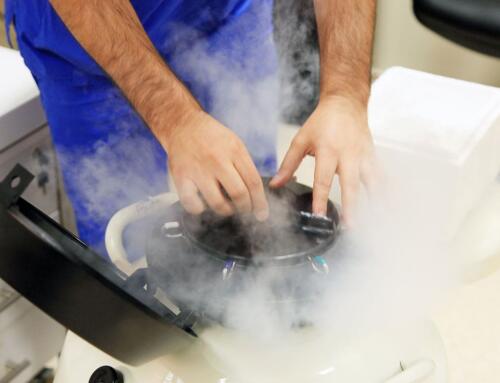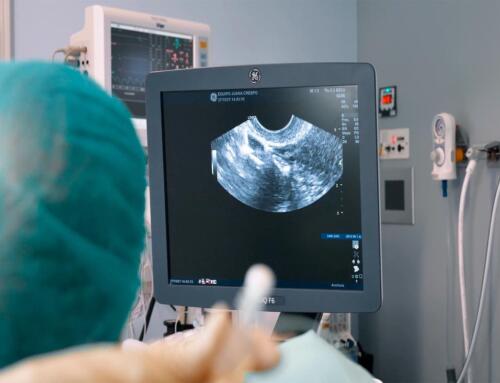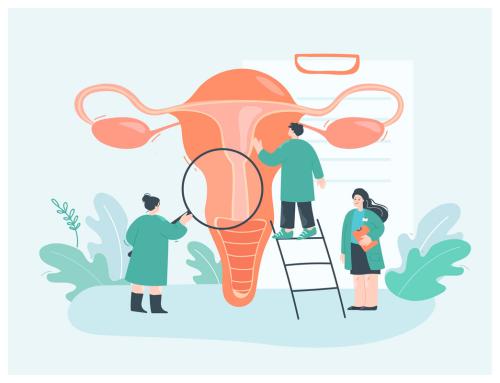Has your gynecologist diagnosed or suspected that you have hydrosalpinx in one or both fallopian tubes? It is possible that this new discovery is generating a lot of anxiety and uncertainty regarding the possibilities of a future pregnancy.
Don’t worry, nowadays we have enough knowledge and technology to diagnose hydrosalpinx, treat this pathology and achieve a full term pregnancy. How? Keep reading and we will explain it all to you.
What is hydrosalpinx?
The first thing you should understand is that hydrosalpinx is a disorder that affects one or both fallopian tubes. These tubes become blocked and dilated due to the accumulation of fluid inside them.
We know that in order to produce a pregnancy in vivo, the fallopian tubes play a very important role, since this is the place where the egg and the sperm meet, that is, where fertilization takes place. And what happens if the tubes are blocked? Simply put, if the tubes are full of fluid, fertilization cannot take place.
If the tube is not completely blocked and fertilization can occur, the hydrosalpinx makes it impossible for the fertilized egg to be transferred to the uterus, thus increasing the risk of ectopic pregnancy, i.e., that the embryo implants in the tube and the pregnancy never reaches term.
If there is only hydrosalpinx in only one tube (which is not common) and the other remains more or less healthy, the fluid in that tube continues to affect because when it empties it does so towards the uterus, which causes a hostile environment for the embryo, preventing gestation.
What causes hydrosalpinx?
If you are wondering where the fluid that plugs the tubes comes from, the answer is multiple.
Many women who have hydrosalpinx also have endometriosis, but often in most cases, hydrosalpinx comes from chronic infections caused by sexually transmitted diseases, such as gonorrhea or chlamydia. These diseases may take years to be detected and by then may have slowly damaged the tubes.
There are also other origins of infections causing hydrosalpinx:
- Previous surgeries that have developed in the fallopian tubes.
- Pelvic adhesions
- The use of intrauterine devices (IUD) as a contraceptive method.
- Previous ectopic pregnancy.
Main symptoms of hydrosalpinx
In most cases, hydrosalpinx has no symptoms or discomfort. Most commonly, it is an anecdotal finding when the gynecologist performs an ultrasound or when possible causes of infertility are being studied.
However, there are also women who do notice discomfort due to hydrosalpinx, such as:
- Chronic or recurrent pelvic pain.
- Intermittent abdominal discomfort
- Constant vaginal discharge.
A diagnosis for experts
Since hydrosalpinx does not usually cause discomfort, many women do not discover the pathology until they see that pregnancy does not come naturally. Moreover, at Equipo Juana Crespo we have treated women with hydrosalpinx who had undergone assisted reproduction treatments in other clinics without having been alerted to this problem.
This can happen because a transvaginal ultrasound can only detect large hydrosalpinx. However, when the ultrasound is performed by an expert gynecologist it can detect smaller hydrosalpinx.
It is also possible to perform another diagnostic test. This is hysterosalpingography, which we perform in the radiodiagnostic service. Hysterosalpingography consists of taking serial X-rays while a contrast agent is passed through the tubes. If the tubes are permeable, the liquid is poured out of the ends. If they are blocked, the tubes appear thicker than normal and the fluid is trapped, dilating the size of the tube.
A final way to diagnose hydrosalpinx is through laparoscopy. This is a minimally invasive surgery that involves an incision in the abdomen through which a tiny video camera is inserted through which we see the tube. Since it is a more invasive test, we do not perform it in all patients, only in specific cases in which we have a high suspicion of tubal dilatation and we take advantage of laparoscopy to intervene in this pathology.
What to do if diagnosed with hydrosalpinx?
As we have already mentioned, in the case of a diagnosed case of hydrosalpinx where the fluid makes fertilization impossible, we have to resort to IVF treatment, in vitro fertilization. In the IVF laboratory, the meeting of the sperm with the egg will take place, since it is not possible in the tubes.
But going on to IVF without treating the hydrosalpinx is a big mistake. As we have already mentioned, the fluid from the tubes that falls into the uterus is harmful to the embryo and makes gestation impossible.
Therefore, the step prior to IVF is surgery. The only treatment for hydrosalpinx is surgical. There is no way to remove the fluid and above all to re-establish the proper functioning of the tube.
This surgery can be a salpingectomy by laparoscopy which consists in removing the tubes. If it is not possible to perform a complete removal of the tubes, either because the patient has had previous surgeries, many adhesions or any other type of surgical intervention, an occlusion of the tube is performed to prevent the fluid from flowing into the uterus.
Once the surgery has been performed, it is possible to resort to in vitro fertilization to achieve pregnancy. For this, the eggs are aspirated directly from the ovaries, fertilized in the laboratory and finally the best embryos are placed in the uterus. All this without the need to go through the fallopian tubes that we have previously plugged or removed.
The importance of reproductive surgery
In Juana Crespo we use reproductive surgery to restore functionality to an organ that, due to different pathologies, has been rendered useless. For this, it is necessary that there is an adequate and accurate diagnosis, that the team has the necessary skills to perform the surgery, and that they have the experience to make delicate surgical decisions.
But in the case of hydrosalpinx, as well as other very complex pathologies in reproduction, it is not possible to restore the functionality of the affected organ, in this case, the tubes. However, surgery does help us to improve the functionality of the uterus and to optimize the outcome of assisted reproduction treatments because hydrosalpinx may be the only reason for not achieving pregnancy.
In our experience, most repeated implantation failures are caused by an unknown and/or underestimated factor. That is why in Juana Crespo we study previous failures, whether in vitro or in vivo, and we use all available technology to find the cause of your infertility.
If your attempts to become pregnant have been unsuccessful and you have been diagnosed with hydrosalpinx, it is time to put yourself in experienced hands capable of resolving the pathology and get your uterus in the best conditions to receive and gestate an embryo to term. Call us at 961 042 557 or write us at info@juanacrespo.es and you will be able to book your first appointment with us.
















